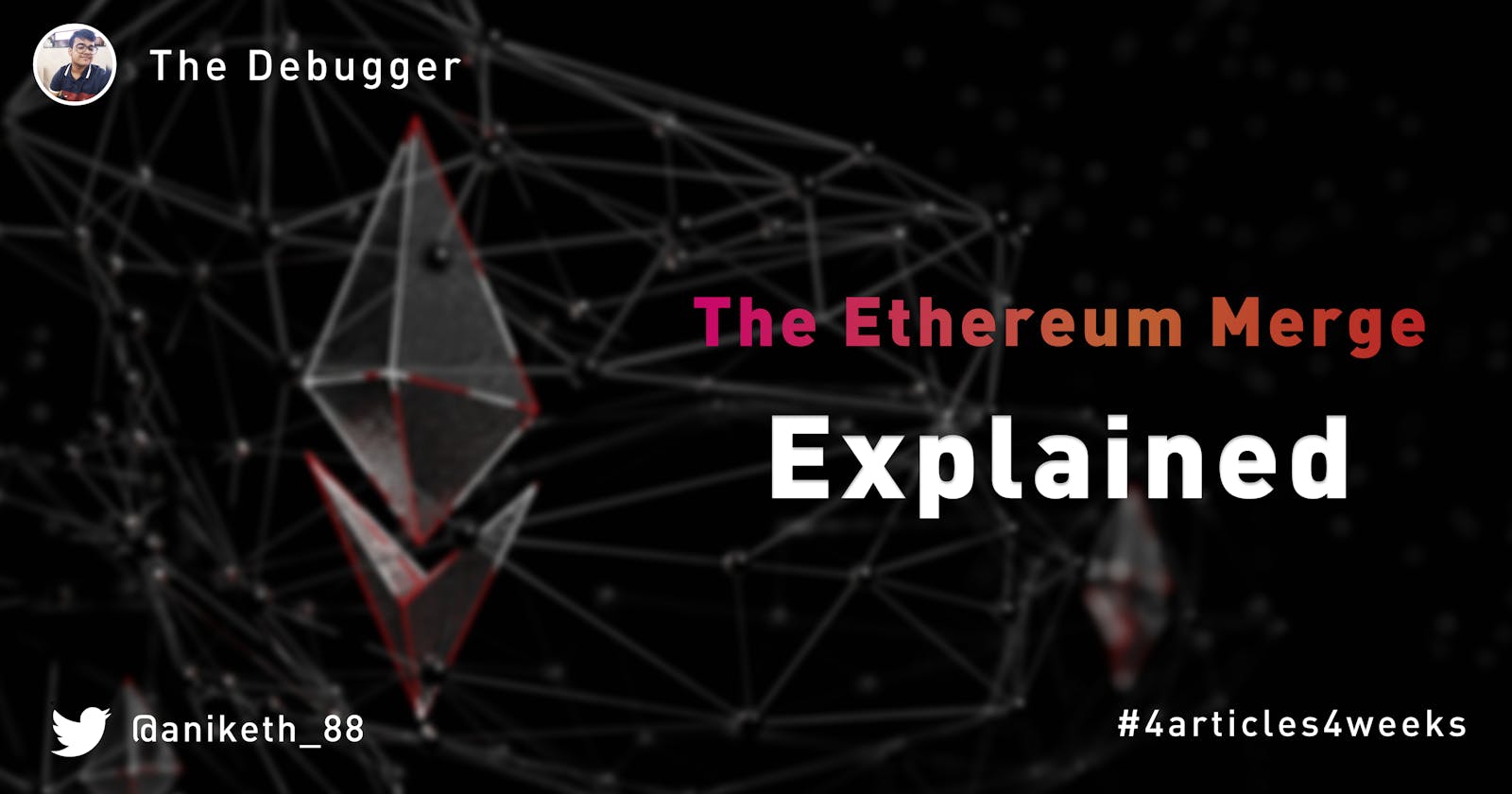Hey Everyone 👋
In this piece of article, we are going to discuss the most anticipated event in the crypto industry The Merge. Everyone has heard about Ethereum but very few understand what's happening in the merge and why crypto folks should be excited about this!
Google: "The merge" and you'll see this! 😉

What is actually The Merge?
The event is happening this week, more precisely after three days at the time of writing this article. If you’ve heard anything about the crypto space, you must have heard about Ethereum, the second largest crypto by market capitalization today. The Merge represents the Ethereum blockchain network transition from Proof-of-Work(PoW) to Proof-of-Stake(PoS). The tentative Ethereum Merge date is around 13-15th September 2022! If you don't know about POW or POS, please make sure to read my article on this topic for a better understanding.
How will it help?
The Merge will completely transition to the proof-of-stake mechanism from the proof-of-work mechanism. Staking means to deposit crypto for some time to get a reward. This can vary on the amount you deposit or for how much time you stake your crypto. Proof-of-stake blockchain helps secure a protocol which means the more amount staked, the more blockchain is secure. This means, that the more is staked, the more secure the blockchain will be after the merge.
From miners to validators
In proof-of-work, miners have to solve cryptographic puzzles to verify new blocks which will not be in the case of proof-of-stake. Now, miners will be called validators because they need to stake at least 32 ether to be eligible. Since cryptographic puzzles will no longer be part of the system, the electricity expenditure will go down an estimated 99.65%, according to the Ethereum Foundation.
Why is it called 'the Merge'?
The Ethereum blockchain that people use is known as the "mainnet," as distinguished from various "testnet" blockchains that are used only by developers. In December 2020, Ethereum developers created a new network called the "beacon chain". The beacon chain is essentially the new Ethereum.
The beacon chain is a proof-of-stake chain that's been chugging along in isolation since its creation 19 months ago. Validators have been adding blocks to the chain, but these blocks have contained no data or transactions. It's like a bus doing routes with no passengers just to make sure the engine runs properly.
The Merge will see the data held on Ethereum's mainnet transferred to the beacon chain, which will then become the prime blockchain on Ethereum's network. In the run-up to the Merge, Ethereum developers have been stress testing the new blockchain by running data and transactions through it on various Ethereum testnets.
The Merge has been delayed many times over the last couple of years. Ethereum's developers are being extra careful, Charbonneau said, to ensure the different client validators used can work together at the time of the Merge.
Benefits of the merge
Transition from PoW to PoS
This is a more efficient consensus mechanism in terms of logic used in the network, thus will be beneficial to the Ethereum ecosystem as a whole.Energy efficiency
This transition from PoW to PoS would also bring about a 99.95% drop in the consumption of energy that we see in Ethereum today, thus making it one of the most radical moves in the crypto industry.Sharding
Sharding basically sets the stage for the future of the Ethereum ecosystem for future scaling upgrades that will be required as the crypto ecosystem and the market grows with time.Use-case & investment narrative
The successful completion of the Ethereum Merge would also bring about a major change in the fundamental functioning, opening up the doors to many more use cases in the space and drive further investment narrative for the altcoin king.
What happens after the merge?
After the Merge, there’s another process that will kick in – called Sharding. This is a process that will essentially help prepare the network for Ethereum 2.0’s Shard chains – which will fully rely on a functional PoS network to operate. By spreading the network workload over 64 blockchains, these shard chains will provide additional cheaper layers for apps and rollups to store data. They also enable layer 2 systems to offer low transaction fees while benefiting from the security of the Ethereum mainnet.
So, The Merge is essentially only the first of five steps in the developmental phases of the Ethereum network. Take a look at this Twitter thread explaining the entire process.
Conclusion
With this successful Merge, it will signal the end of proof-of-work for Ethereum and start the era of a more sustainable, eco-friendly Ethereum. This will also set the stage for further scalability upgrades not possible under proof-of-work, bringing Ethereum one step closer to achieving the full scale, security, and sustainability outlined in its Ethereum vision.
Now with the technology ready, these upgrades with reconfiguring Ethereum to make it more scalable, secure, and sustainable – to make life better for existing users and even entice new ones. All of this, while preserving Ethereum’s core value of decentralization.
That's it for this article and I hope I could help you, if you liked it, please share it with folks who want to educate themselves about the merge.
